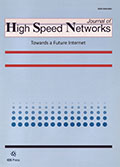Authors: Vhatkar, Kapil | Kathole, Atul B. | Kshirsagar, Aniruddha P | Katti, Jayashree
Article Type:
Research Article
Abstract:
The machine learning technique has been used to increase cloud management’s intelligence. Effective resource provisioning also preserves the environment. Manual cloud management has some difficult problems, such as complexity in cloud systems and scale issues. Hence, this paper introduces a new task for managing the resources in the cloud using deep learning. The aim is to predict the overall workload and server status prediction to the cloud resource management. Initially, performance monitoring is performed to keep aware of the performance of the application and guarantee the cloud application’s performance. In the suggested work, the required data is collected for the
…resource utilization on multiple Virtual Machine (VM) metrics. The VM provisioning is performed next to rectify the issues of resource provisioning. After that, the workload and server status prediction is conducted, where the Weighted Recurrent Neural Network (W-RNN) is adopted. After attaining the predicted workload, the VM placement module is carried out. Here, the virtual resource’s quantity is attained. Moreover, the multi-objective functions like resource utilization; cost, energy, time, and Quality of Service (QoS) are derived in this phase with the help of the Improved Rain Optimization Algorithm (IROA). Subsequently, the VM recycling is performed in the suggested work. Here, a resource collector is given for the virtual resources recycling task. It scans the applications of the cloud in the data centre and processes the VM recycling for every application. While considering the statistical analysis of the IROA-W-RNN-based resource management system achieved a mean of 56.27% than JAYA-W-RNN, 21.09% than SCO-W-RNN, 60.2% than MFOA-W-RNN, and 16.74% than DA-W-RNN for configuration 4. Finally, the numerical analysis is conducted to validate the presented resource management task with the aid of various conventional tasks.
Show more
Keywords: Resource management in cloud applications, virtual machine provisioning, Weighted Recurrent Neural Network, placement and recycling, workload and server status prediction
DOI: 10.3233/JHS-230212
Citation: Journal of High Speed Networks,
vol. 30, no. 4, pp. 583-606, 2024
Price: EUR 27.50





